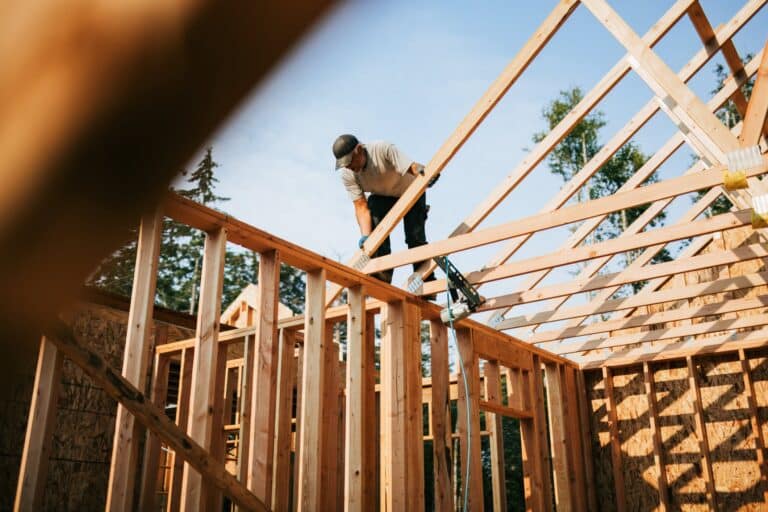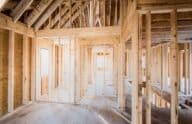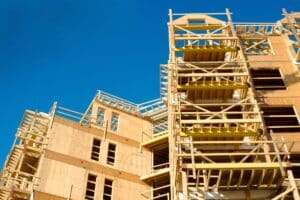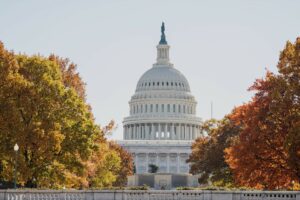It’s time for government to get out of the way and let Americans build

According to Bloomberg, new home construction sank to its lowest level in years, comparable only to the downturn during the pandemic-induced shutdowns of 2020. Financial experts quoted in the piece blame restrictive monetary policy — interest rates are high and so are mortgages, making new home construction an expensive endeavor.
Monetary policy is one thing, but it doesn’t address the underlying disease that has made housing so expensive and, for far too many Americans, practically unobtainable: the burden of excessive regulatory cost.
Nearly a quarter of the cost of developing new single-family housing is directly attributable to regulatory burden. For multi-family housing, it’s closer to half. And the problem keeps getting worse: in 2011, the regulatory cost of single-family housing was about $65,000. In 2021, it approached $94,000.
But it’s not just money — it’s also time. Getting a project approved in many highly regulated jurisdictions can take more than eight months. In the worst jurisdictions, the time for approval can range from 18 months to two years.
Some regulations make sense. We want to make sure our housing is safe and habitable. And it’s appropriate for zoning laws to prevent nuisances; we don’t want a landfill next door to a nursery school. But the reality is that today’s housing regulation goes far, far beyond those sensible safeguards.
Aesthetic considerations of “neighborhood character,” minimum lot sizes, arbitrary density limits, parking requirements, and good old-fashioned bureaucratic red tape contribute to the housing crisis but do nothing to protect the public’s health and safety. It’s one thing for people to agree to these limitations among themselves in a homeowners association, but it’s another when the government imposes them flatly across wide jurisdictions, empowering the already-empowered at the expense of young people and newcomers.
To make matters worse, environmental regulations are too easily abused. Intended to ensure consideration of natural resources when undertaking development, such policies have been transformed into cudgels for NIMBYs to slow-walk or even beat back new housing development that, in reality, poses no real environmental threat. A recent report by the Little Hoover Commission observed that the California Environmental Quality Act, better known as CEQA, often turns “housing development into something akin to urban warfare — contested block by block, building by building.” It concluded that addressing these regulatory barriers “is a key ingredient to building the housing that California needs.” Meanwhile, Minneapolis’ bold upzoning plan was derailed by environmental lawsuits brought under MENA, the state’s equivalent to CEQA. Fortunately, the Minnesota legislature stepped in to protect the City’s ability to deregulate its zoning code. Other states should
While government regulators continue to put up roadblocks for new housing, my firm — Pacific Legal Foundation — is working on several fronts to facilitate new housing construction. Our work to eliminate arbitrary impact fees and other unreasonable conditions on housing development will help ensure that the government can’t take advantage of its role in the permitting process to extract extra fees and costs from the people building housing. Charging a developer to mitigate the impacts of new construction is fair, but the government often uses the permitting process to exact money to pay for other public costs like new roads unrelated to development. Not only do these fees unnecessarily add thousands of dollars to the cost of new housing, but they are also unconstitutional unless they meet the Supreme Court’s strict test, which ensures that permitting authorities are not forcing home builders to bear more than their fair share of the cost of public programs.
We are also fighting arbitrary definitions of what constitutes a “family,” which frequently force households to underutilize their space and leave bedrooms vacant. We’re fighting the abuse of environmental policies by governments that use them to block housing, which has been proven to have no negative environmental impact. Jim Burling, PLF Vice President of Legal Affairs and a property rights expert, is working to educate the public with his book Nowhere to Live: The Hidden Story of America’s Housing Crisis.
There is only one way out of our housing rut: we need to build. In his farewell address, President Reagan imagined America as “a tall, proud city built on rocks stronger than oceans, windswept, God-blessed, and teeming with people of all kinds living in harmony and peace; a city with free ports that hummed with commerce and activity.” President Obama shared a similar sentiment when he was first elected in 2008, calling for “a new spirit of patriotism, of responsibility, where each of us resolves to pitch in and work harder and look after not only ourselves but each other.”
This American dream transcends partisan bickering and should unite us all. To get this nation “humming” to allow people to “pitch in and work harder,” the government needs to get out of the way and let the people build.












